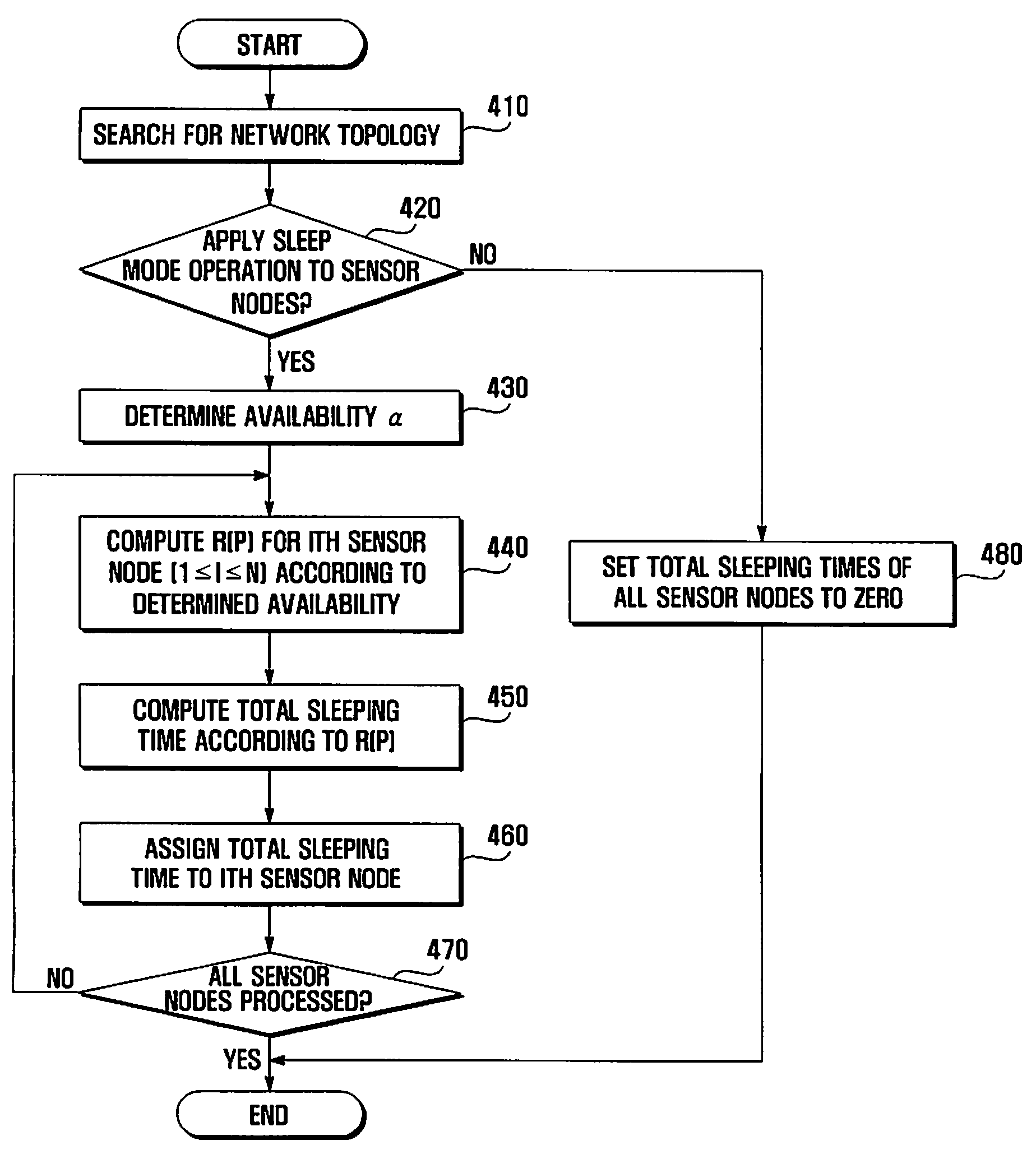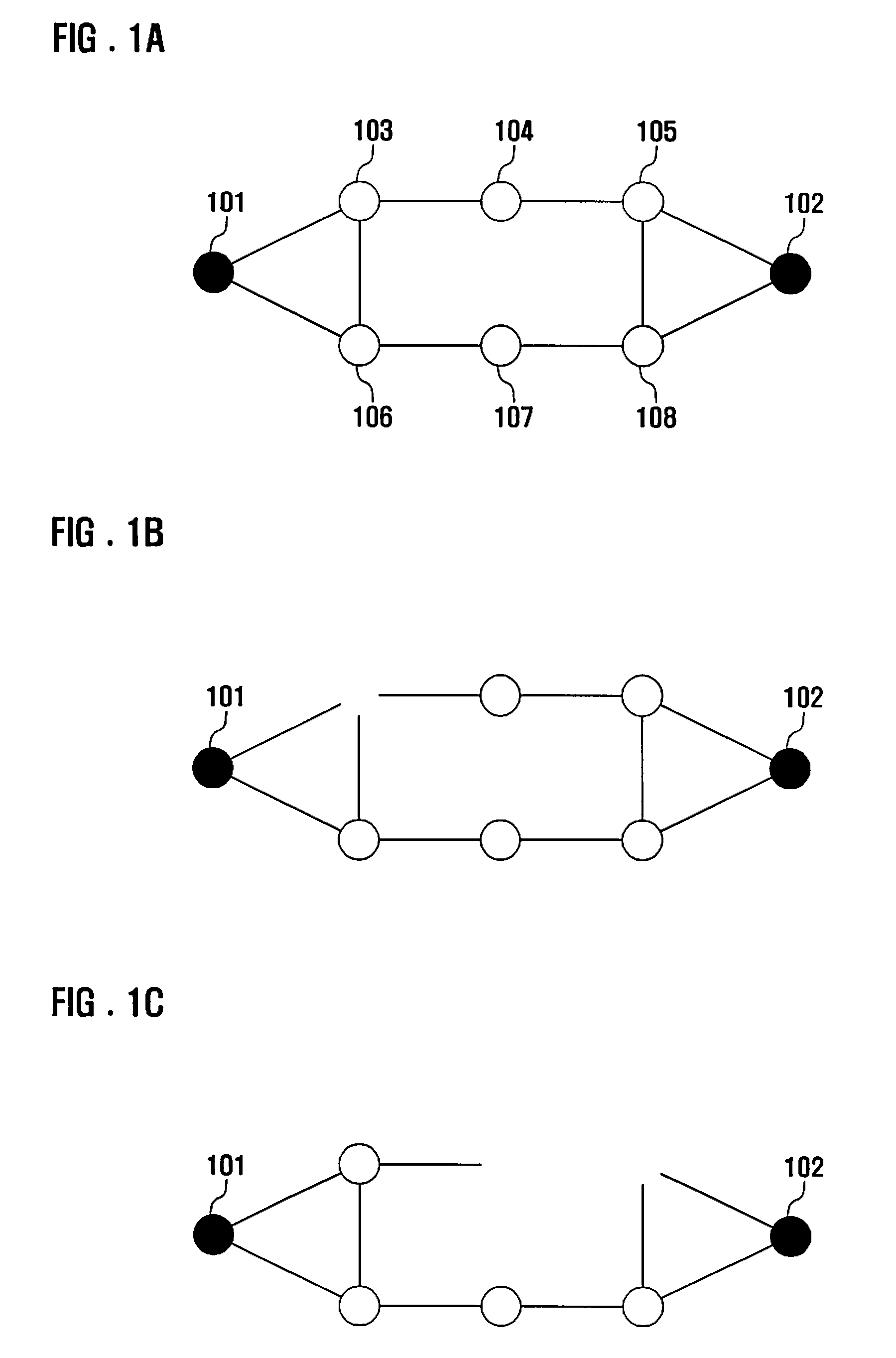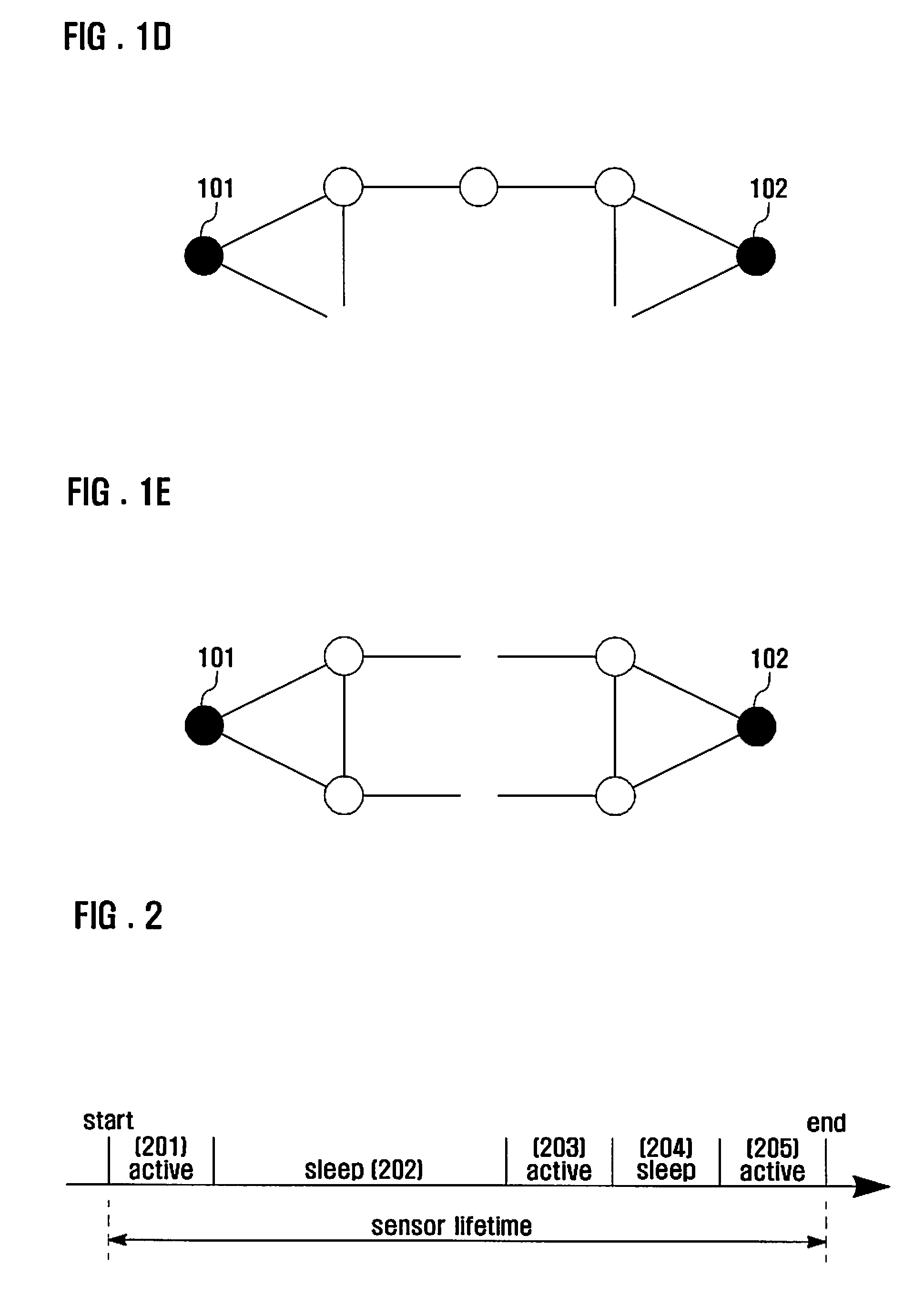Method and system for extending lifetime of sensor nodes in wireless sensor network
- Summary
- Abstract
- Description
- Claims
- Application Information
AI Technical Summary
Benefits of technology
Problems solved by technology
Method used
Image
Examples
Embodiment Construction
[0020]Preferred embodiments of the present invention are described in detail with reference to the accompanying drawings. The same or similar reference symbols are used throughout the drawings to refer to the same or similar parts. Detailed descriptions of constructions or processes known in art may be omitted to avoid obscuring the subject matter of the present invention.
[0021]FIG. 1A illustrates a sensor network, and FIGS. 1B to 1E illustrate connectivity states in the sensor network of FIG. 1A.
[0022]In the sensor network of FIG. 1A, a sensor node 101 is a source node that collects data and sends the collected data. A sensor node 102 is a sink node that finally receives the data from the source node and sends the received data to a given external apparatus. Intermediate sensor nodes 103 to 108 relay data from the source node to the sink node. In accordance with the principles of the present invention, the sensor nodes communicate with each other while making transitions between a ...
PUM
 Login to View More
Login to View More Abstract
Description
Claims
Application Information
 Login to View More
Login to View More - R&D
- Intellectual Property
- Life Sciences
- Materials
- Tech Scout
- Unparalleled Data Quality
- Higher Quality Content
- 60% Fewer Hallucinations
Browse by: Latest US Patents, China's latest patents, Technical Efficacy Thesaurus, Application Domain, Technology Topic, Popular Technical Reports.
© 2025 PatSnap. All rights reserved.Legal|Privacy policy|Modern Slavery Act Transparency Statement|Sitemap|About US| Contact US: help@patsnap.com



